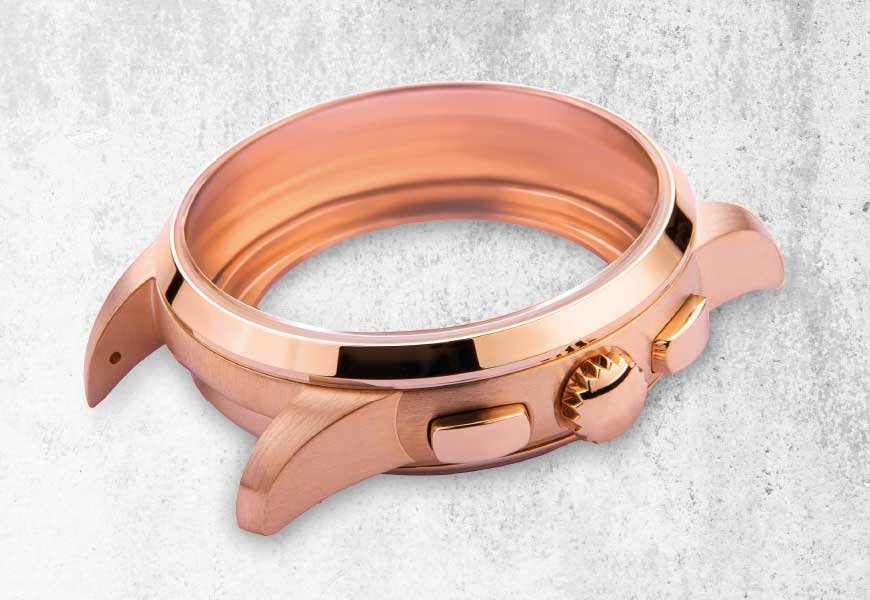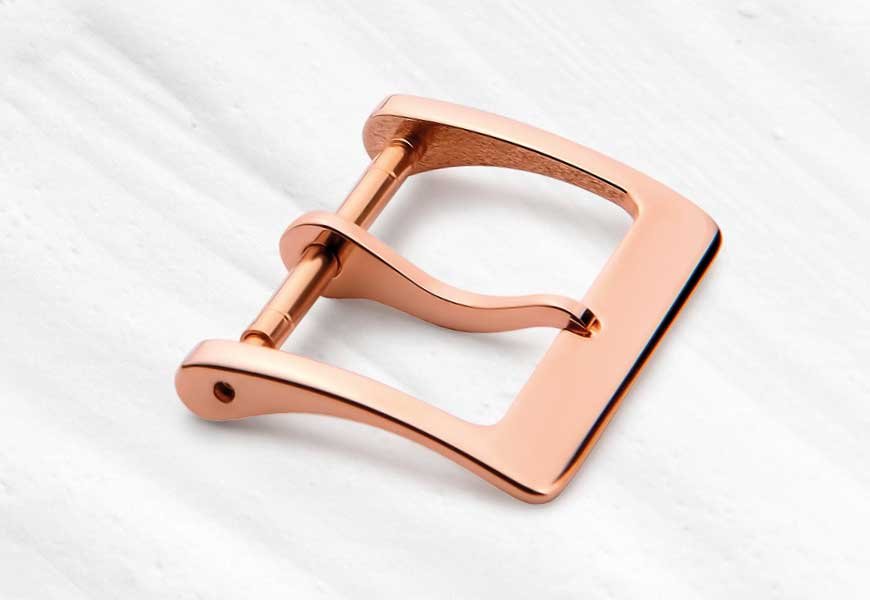oldsmithing is a hallowed tradition in the northern Italian city of Vicenza. Records show that goldsmiths founded a guild there in the early 1300s. Closer to the present day, the city hosts the twice-yearly Vicenzaoro jewellery fair. Italy has emerged as the world’s largest exporter of gold jewellery and Vicenza, in the Veneto region, is its capital.
Established in Vicenza in 1953, Salin took a different route. Still working with precious metal, it makes not jewellery but watch bracelets and cases. The vast majority of its production, around 90%, goes to Switzerland. The remainder is exported to Japan and Germany.
-

- Vicenza is an historic centre for gold jewellery. Salin instead specialises in the manufacture of watch cases and bracelets from gold that it melts in its own foundry (Europa Star 1969 archive).
- ©Archives Europa Star
Salin was established by Romeo Ermenegildo Salin and is still managed by second- and third-generation members of his family, now joined by representatives of the Zigliotto family. Production originally focused on watch bracelets, extending to cases in the mid-1990s. “Our customers found that other manufacturers’ cases didn’t always fit our bracelets,” says Ernesto Zigliotto. “Naturally we responded by launching production of our own cases in precious metal, at customers’ request.”
-

- The Salin factory featured in this article published in Europa Star in 1969.
- ©Archives Europa Star
Technology transfer was assured by specialists, recruited by Salin in Le Locle. Machinery came from Willemin-Macodel, a long-standing partner. Salin works primarily with gold but is also equipped to work with alloys, platinum and palladium – one of its most recent acquisitions is a machine-tool specifically for platinum. This year, 10% of orders have been for this metal versus 2% previously. Similarly, cases currently account for 30% of total production compared with 10% a decade ago. In addition to bracelets, Salin also manufactures clasps and buckles in its 3,000-square metre factory.
“We have a loyal clientele and give priority to the twenty-some brands we have been serving for numerous decades. For example, we have been working with Jaeger-LeCoultre since the 1960s and with Bucherer since the 1970s,” notes Giuseppe Zigliotto. As watch brands move upmarket, Salin, which employs 80 staff, has moved with them, adapting to demands with new equipment and fresh propositions, all the while staying focused on its core business of producing components in precious metal.
The company also stays current through close collaboration with the academic world, as Alberto Salin explains: “In recent years we’ve worked a lot with University of Padua in the field of metallurgy. Whereas most of our competitors buy pre-formed material, we do everything ourselves, from melting the metal to delivery of the finished case, sapphire crystal included. Research carried out with the university serves to improve these processes, for example achieve better machining quality, evaluate surface roughness or visualise surfaces after machining.”
One innovation to have come out of this joint research is an invisible DNA marker which can be used to trace and authenticate a watch. Salin distributes this product, which was developed by a local company. “An algorithm generates a unique 20-character code. This code is reproduced in laboratory conditions in liquid form: synthetic DNA that is fixed to the surface of a component. Seventy-two hours later, there is absolutely no trace of it. We register where the marker was positioned. It reacts to a specific agent that we apply should we need to reactive the code and identify the watch,” Ernesto Zigliotto explains.
The test, which takes around 15 minutes, is “similar to a covid test”, with a control line and a test line. Following a world premiere at the EPHJ fair in June, it is now being offered to watch brands. Tests can be carried out by Salin or by the customer using the appropriate testing kit– the most logical solution being that after-sales centres conduct tests to authenticate watches that come in for servicing or repair.
-

- Advertisement for Salin in a 1975 issue of Europa Star. The company turns 70 this year.
- ©Archives Europa Star
While staying focused on its core expertise, manufacturing gold watch cases, bracelets, clasps and buckles, Salin (a member of the Responsible Jewellery Council) is putting innovation front and centre, as this DNA marker shows. The company is open to introducing more new ideas which, given Vicenza’s legacy of jewellery-making, could be for the jewellery sector. Enough to stay busy for the next 70 years and beyond.














































